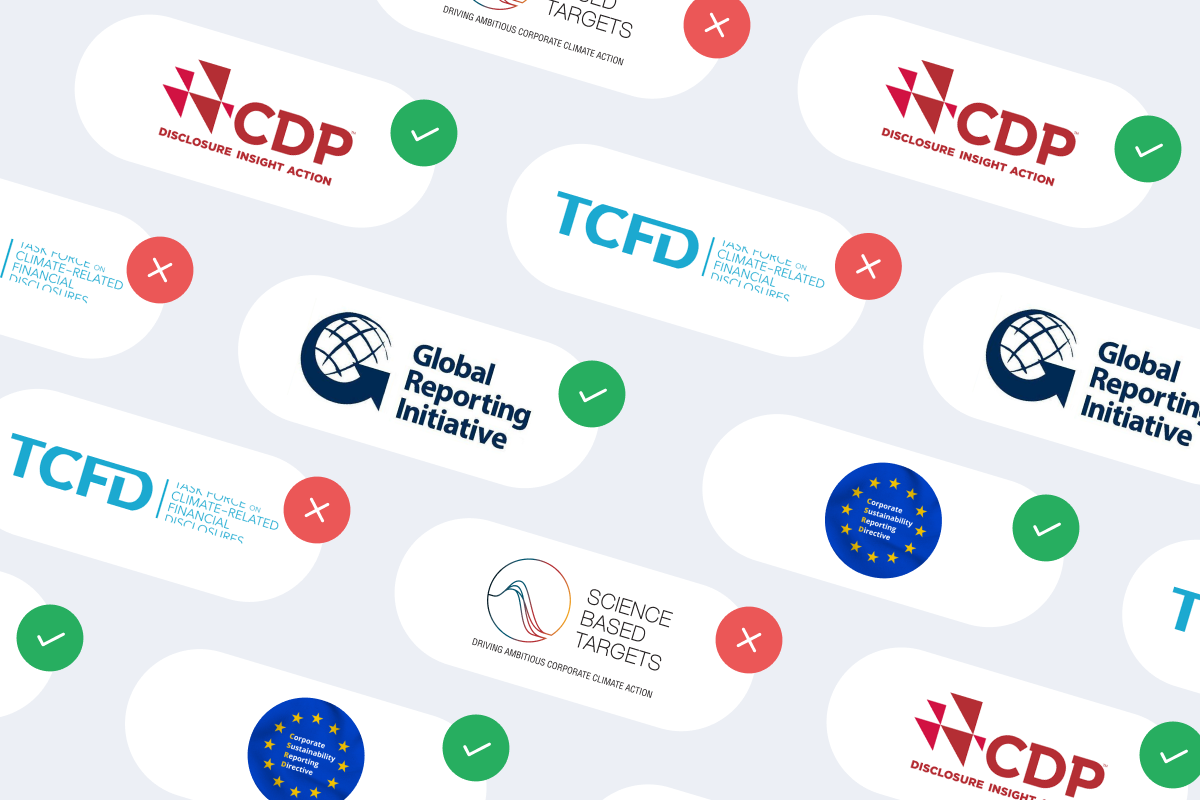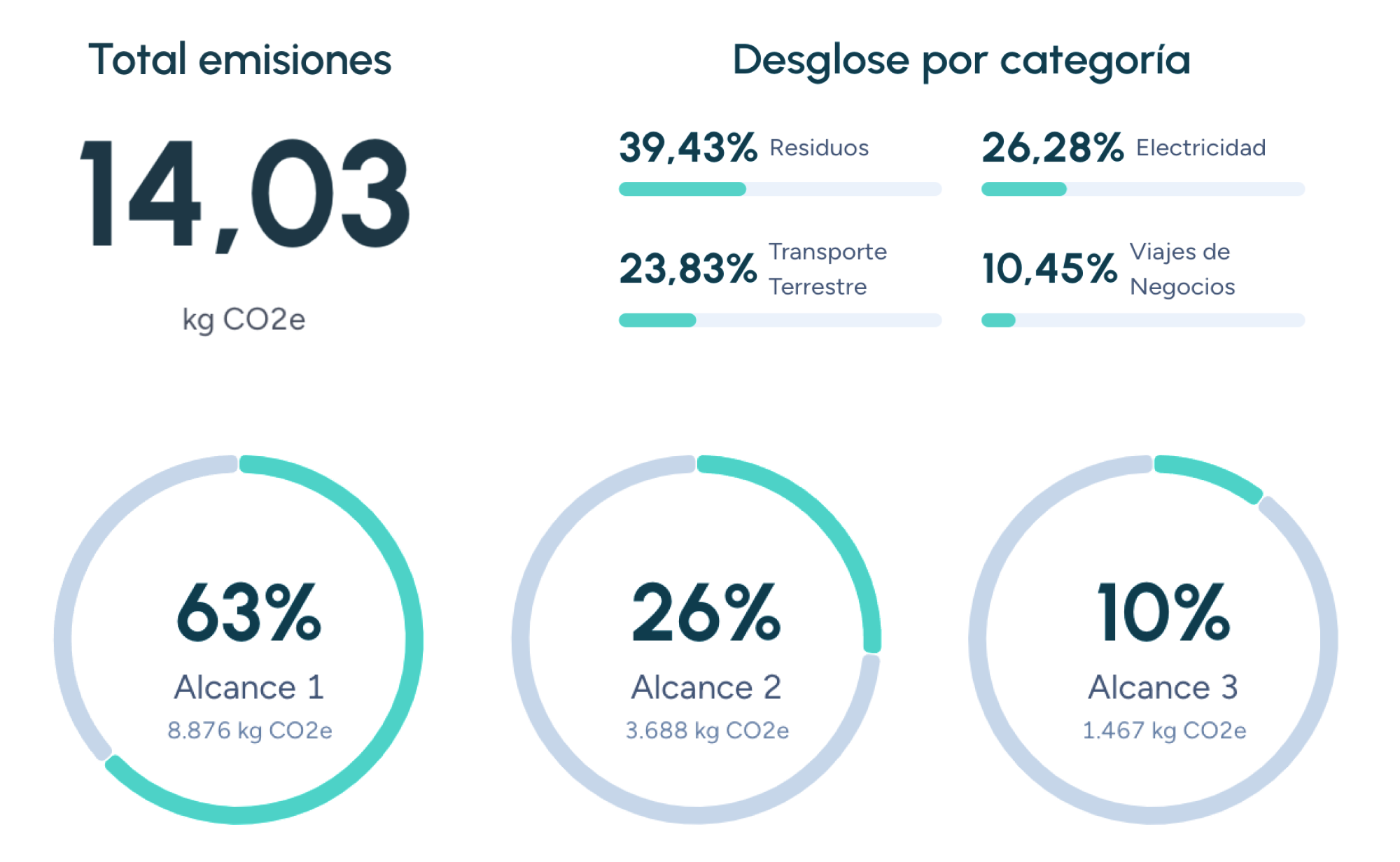E
Environmental sustainability indicators (KPIs)
Environmental sustainability indicators are quantitative metrics that assess an organization's environmental performance in relation to its activities, products, or services. These indicators provide valuable information on the use of natural resources, greenhouse gas (GHG) emissions, waste generation, and other key sustainability aspects.
Types of environmental sustainability indicators for carbon footprint measurement
There are numerous environmental sustainability indicators, and selecting the most relevant ones depends on the specific characteristics and objectives of each organization. Some of the most commonly used indicators in carbon footprint measurement include:
Direct emission indicators (scope 1 emissions)
- CO₂ emissions from fossil fuel consumption (natural gas, propane, gasoline, diesel).
- CO₂ emissions from industrial processes.
- Emissions of other GHGs (methane, nitrous oxide, etc.).
Indirect emission indicators from energy consumption (scope 2 emissions)
- Electricity consumption (kWh).
- CO₂ emissions associated with electricity consumption (emission factor).
- Thermal energy consumption (steam, hot water).
- CO₂ emissions associated with thermal energy consumption.
Indirect emission indicators from supply chain (scope 3 emissions)
GHGemissions from product transportation and distribution.- GHG emissions from business travel.
- GHG emissions from product use and end-of-life.
- GHG emissions from waste management.
Examples of environmental sustainability indicators across different sectors
The application of environmental sustainability KPIs varies by industry. Below are some examples:
- Manufacturing Industry: CO₂ emission intensity per unit of product, water consumption per unit of product, percentage of recycled waste.
- Energy Sector: CO₂ emissions per kilowatt-hour (kWh) generated, percentage of renewable energy in the energy mix, energy efficiency of facilities.
- Transportation: CO₂ emissions per kilometer traveled, fuel consumption per kilometer traveled, percentage of electric vehicles in the fleet.
- Construction: Carbon footprint of construction materials, building energy consumption, management of construction and demolition waste.
Benefits of using environmental sustainability indicators
Implementing an environmental sustainability KPI management system offers multiple benefits for organizations, including:
- Improved environmental efficiency and reduced operational costs.
- Compliance with environmental regulations and access to tax incentives.
- Enhanced corporate image and brand reputation.
- Greater access to financing and responsible investments.
- Strengthened relationships with stakeholders.
The importance of environmental sustainability KPIs in carbon footprint measurement
The carbon footprint, defined as the total GHG emissions generated by an organization, product, or service, has become a key indicator for assessing environmental impact. Environmental sustainability indicators play a crucial role in measuring and managing the carbon footprint, as they allow organizations to:
- Quantify emissions: KPIs provide a solid foundation for measuring and recording an organization's GHG emissions using recognized methodologies such as the Greenhouse Gas Protocol (GHG Protocol).
- Identify areas for improvement: By analyzing KPIs, organizations can pinpoint major emission sources and areas where more effective reduction measures can be implemented.
- Set goals and targets: KPIs enable organizations to establish specific, measurable, achievable, relevant, and time-bound (SMART) emission reduction objectives.
- Monitor progress: Regular KPI tracking allows organizations to evaluate the effectiveness of their emission reduction strategies and make adjustments if needed.
- Communicate performance: KPIs provide objective, verifiable data that organizations can use to report their environmental performance to stakeholders, such as investors, customers, and regulators.
Companies that trust us

CO₂ Equivalent
Understand what CO₂ equivalent means and why it's important in measuring the carbon footprint. Learn how it’s calculated and its role in fighting climate change.
Carbon Footprint
The carbon footprint measures the total amount of greenhouse gases emitted directly or indirectly by human activities, and its reduction is key to mitigating climate change through strategies such as energy efficiency and the use of renewable energy.
Carbon Footprint aspects
Discover what a carbon footprint is, why it matters, how it is measured, and the emission scopes defined by the Greenhouse Gas Protocol.
Guiding businesses towards net-zero emissions through AI-driven solutions.
© 2025 Manglai. All rights reserved
Política de Privacidad


